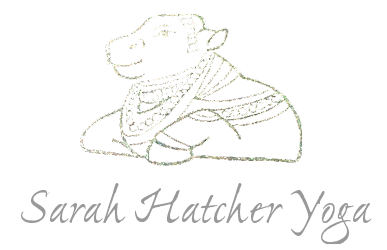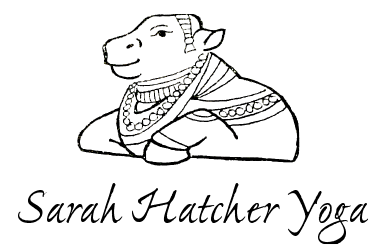the Bhagavad Gītā
On Bhakti…and the Bhagavad Gītā
During the few golden years of 2016-2019 I found myself in the utter cosmos of freedom within my physical body: I had a profound couple of years of ease in āsana: slipping in and out of difficult postures, gaining wisdom in the spine and with the breath. What followed was a difficult pregnancy and traumatic labour with Calvin, so I focused again on the tradition of ashtanga yoga and my diet and elevated my body and mind to the highest level of yogic practice once again. I got it all back after the birth of Dashiel and again with Calvin. I had this unsatiable hunger to get back to the practice I once had and wanted to have again. I saw the yogi mother as someone who could do it all.
With all this time on the mat (usually between 4 am and 6 am or anytime while my little baby Calvin slept); this well-earned clarity of mind allowed me to see how things weren’t going well in some areas of my life. I saw and felt how my marriage was failing, I wanted it to work so I followed my husband Tim to Ireland; the move took me away from my yoga community and I had to start all over. It was this move to Ireland that broke me entirely.
Here we are in 2024, five years later and since then, things have been blossoming in some ways and also slowly deteriorating in others. My marriage has ended, and I found that freedom doesn’t come as easily in āsana nor does it live in the body, it definitely doesn’t live on a yoga mat. It does pulse and live the soul, it is alive through work and service, and it shines when there is a healthy relationship with the self. It shines when the body is quiet and the mind is still and this could happen anywhere, anytime, not actually only on a yoga mat!
It is awakened for me when I am breathing steadily, laughing with my children and focusing on an athletic, healthy and mindful lifestyle. It is also awakened when I am listening with a courageous ear and navigating my way through this world alone. Continuing to be quiet from my seated practice of meditation has taught me that sometimes the best act to do is the act of being still and quiet and to actually do nothing at all.
I feel blessed here in Ireland that I am able to live in this glorious city of Dublin, have an incredible climbing community and have a disciplined and kind yoga community: the Little Bird Mysore programme where I co-teach with my friend and student, Hannah Dabrowska. (We offer four days of week of Mysore/led classes and online chanting class once per week). I am grateful to the yogis and to the climbers who support me through friendship and kindness and I am delighted when I get to help others on the mat or climb with friends on the vertical wall.
With all this support that I have found after four years of living here, right now I feel confident that it is time to restructure and redefine how I teach and share yoga. Up until now, I have defined yoga as:
daily discipline,
a turning inwards (self reflection through creative journaling and writing)
asana (posture),
pranayama (breathing) and
mantra (tool for the mind -chanting).
And in the next ten years you’ll see me add a few more important parts of practice: devotion to the Lord and service. I am not sure what my service looks just quite yet - it may be getting a new job and a career change altogether, however it is coming along as I sit and listen. I am not sure if I will teach yoga forever however I will practice forever and share what I know as long as I can, even if it is a little bit here and there and not a lot.
This has all come about because my attention turned completely to the teachings from Bhagavad Gītā. This happened around the same time that I started rock climbing more regularly again, so my āsana practice and time on the mat became more thoughtful, more awakened and more soulful. It was also because I let go of holding on to a series - I simply began practicing parts of ashtanga yoga instead of an entire series…and this allowed me to listen more and to extract the gems out of each and every individual pose. I have to say, cooling down the fire a bit on the mat and adding fire elsewhere (my wellness and my climbing) brought me closer to the divine, it wasn’t that fourth series which I thought was!
Edwin Bryant defines this natural progression of adapting yogic practice towards the higher wellness of the self as bhakti: he taught me that first we need to learn the yoga sūtras, then look to the divine to guide us on the path of transformation. And the path for this is the Gītā. I wasn’t really ready to grasp this nor understood what he meant at the time. I was hungry to memorise the sūtras, now that has taken shape, picking up the Gītā became a natural progression.
It sure took a while! My life is about to pick up momentum as my divorce will finalise soon, I have retreats and weekend events ahead April through November and I’ll be a busy bee sharing the above defined yogic practices with yoga sutras and ślokas from the Gītā. I also plan to be out some weekends when I can at the Fairhead climbing.
I most excited about my upcoming 6-week Bhagavad Gītā course!
Join me Wednesdays 17 April through 22 May from 9:30-10:30 am where we will go into detail over the text, have discussions about jñāna yoga (the yoga of Knowledge), bhakti yoga (the yoga of devotion) and karma yoga (the yoga of service and duty). There will be much, much more including detailed pdfs and discussions on Sāṇkhya philosophy. Have a little glimpse into our study below - have a listen and do join us. (All sessions will be recorded so if you can’t attend live the recordings will be sent after. Any questions of course email me - I can’t wait to have you join me and share this experience with you.
Chapter 2 - The Yoga of Knowledge (72 ślokas)
śrībhagavān uvāca
the Blessed Lord spoke
47
karmaṇyevādhikāraste
in action alone the jurisdiction of thee,
mā phaleṣu kadācana
never in fruits at any time
mā karmaphalahetur bhūr
never action-fruit motive should arise,
mā te sañgo ‘stv akarmaṇi
never of thee attachment let there be in
inaction.
Your right is to action alone;
never to its fruits at any time.
Never should the fruits of action be
your motive;
Never let there be attachment to inaction
in you.
48
yogasthaḥ kuru karmāṇi
in Yoga fixed, perform actions,
saṅgaṁ tyaktvā dhyanañjaya
attachment having abandoned,
Conqueror of Wealth,
siddhyāsiddyoḥ samo bhūtvā
to success or failure indifferent having
become
samatvaṁ yoga uchyate
indifference (is) Yoga, it is said.
Fixed in yoga, perform actions,
Having abandoned attachment,
Arjuna,
And having become indifferent to success
Or failure. It is said that evenness of mind
is Yoga.
49
dūreṇa hyavaraṁ karma
by far, indeed, inferior, action
buddhiyogād dhanaṁjaya
to intelligence-discipline, Conqueror
Of Wealth
buddhāu śaraṇam anviccha
in sight refuge seek;
kṛpaṇāḥ phalahetavaḥ
despicable (are) those who are motivated
by fruit.
Action is inferior by far
To the yoga of wisdom, Arjuna.
Seek refuge in wisdom!
Despicable are those whose motives
Are based on the fruit of action.
50
buddhiyukto jahātīha
He who is disciplined in intuitive
Determination casts off here in the world
ubhe sukṛtaduṣkṛte
Both good and evil deeds
tasmād yogāya yujyasva
Therefore to yoga yoke thyself!
yogaḥ karmasu kauśalam
Yoga in action (is) skill
He whose wisdom is established
Casts off, here in the world, both good
And evil actions;
Therefore devote yourself to yoga!
Yoga is skill in action.
51
karmajaṁ buddhiyuktā hi
born of action, the intelligence
disciplined, indeed
phalaṁ tyaktvā manīṣiṇaḥ
fruit having abandoned, the wise
janmabandhavinirmuktāḥ
rebirth bondage freed from,
padam gacchanty anāmayam
(to the) place they go, free from pain.
Those who are established in wisdom,
The wise ones, who have abandoned the fruit born of action,
And are freed from the bondage of rebirth,
Go to the place that is free from pain.


